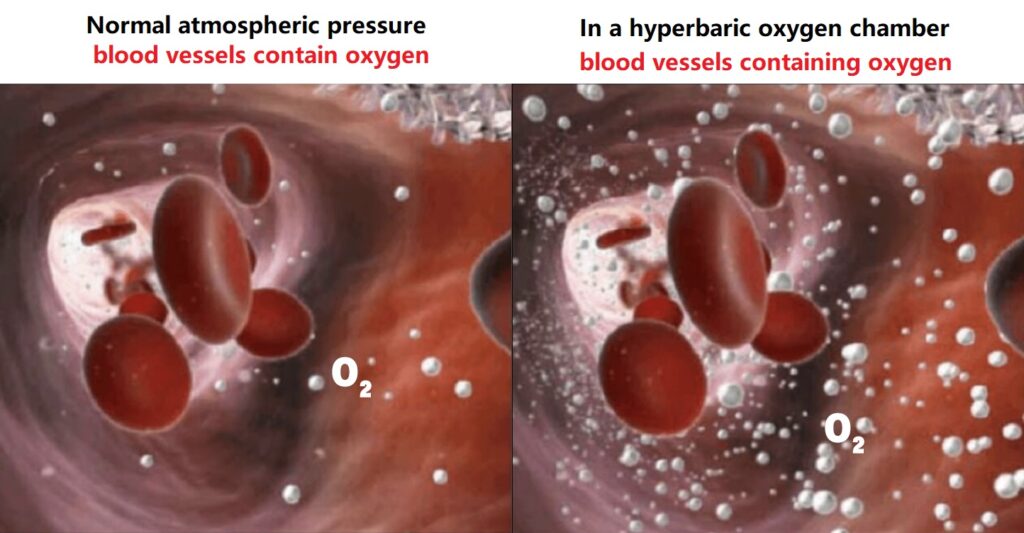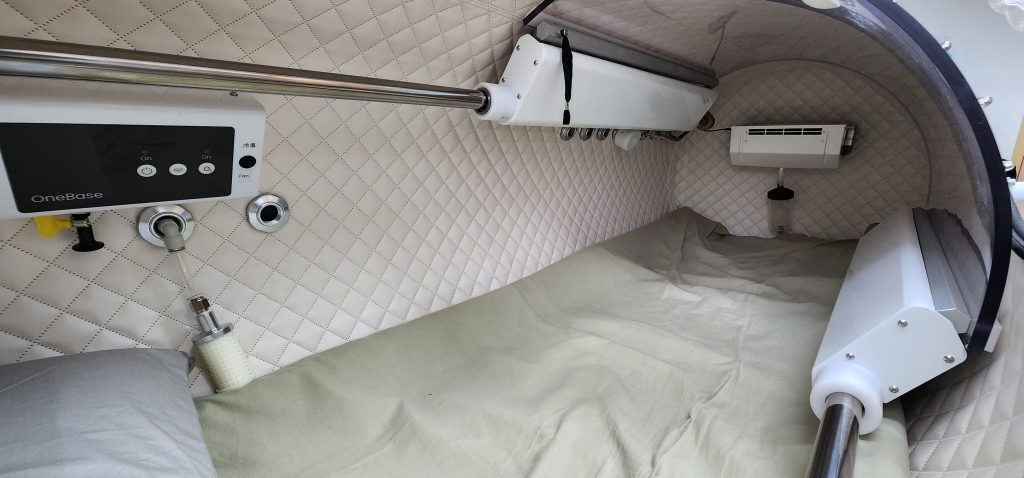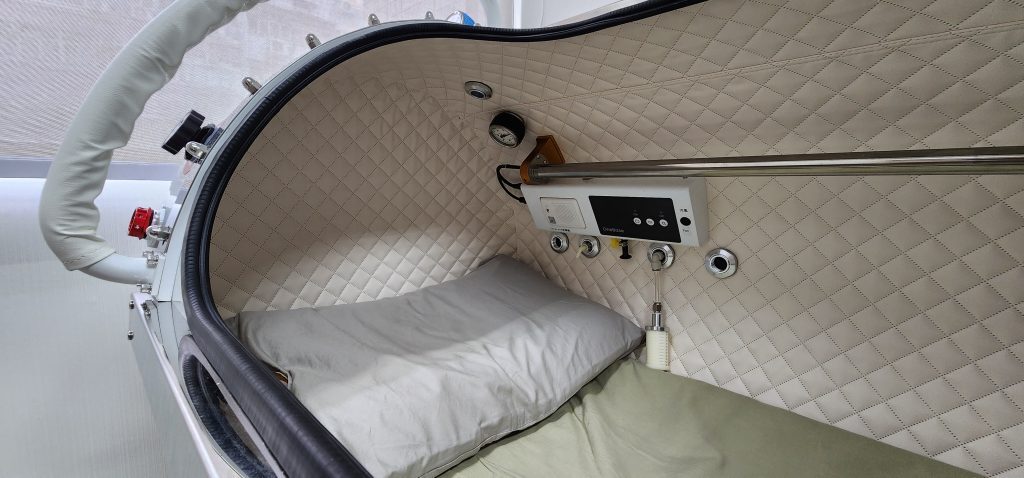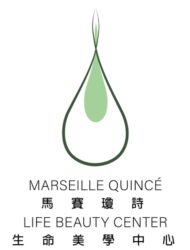What is hyperbaric oxygen therapy?
Hyperbaric oxygen therapy (HBOT) is a medical procedure in which pure oxygen is breathed in a high-pressure environment. Normal ambient pressure is 1 standard atmosphere (atm); in hyperbaric oxygen therapy, the pressure is usually increased to 1.4 – 3 atm (our center’s hyperbaric equipment provides 1.5 – 2 atm). When a patient breathes pure oxygen in a high-pressure environment, the oxygen will dissolve in body fluids such as blood, tissue fluid, and cell fluid, greatly increasing the oxygen concentration in the body and causing multiple physiological reactions:

Promote cell function operation and angiogenesis

Fight bacterial infections, Enhance immune system function
Accelerate wound healing and Repair of damaged tissue

Application scope of hyperbaric oxygen therapy
Hyperbaric oxygen therapy can be used to treat a variety of conditions. The following are diseases or symptoms currently recognized by the U.S. Food and Drug Administration (FDA) as suitable for hyperbaric oxygen treatment:
- Air and gas bubbles in blood vessels
- Severe anemia Anemia (severe anemia when blood transfusions cannot be used)
- Burns (severe and large burns treated at a specialized burn center)
- Carbon monoxide poisoning Carbon monoxide poisoning
- Crush injury
- Decompression sickness (diving risk)
- Gas gangrene Gas gangrene
- Hearing loss (complete hearing loss that occurs suddenly and without any known cause)
- Infection of the skin or bone (severe) causing tissue necrosis
- Radiation injury Radiation injury
- Skin graft flap at risk of tissue death
- Central retinal artery occlusion Vision loss (when sudden and painless in one eye due to blockage of blood flow)
- Wounds (non-healing, diabetic foot ulcers)
According to the Hyperbaric Oxygen Medicine Branch of the Chinese Medical Association, the application scope of hyperbaric oxygen therapy is divided into “Class I indications” and “Class II indications.” The former refers to the medical necessity of hyperbaric oxygen therapy based on existing clinical evidence; the latter refers to diseases or symptoms for which hyperbaric oxygen therapy may bring benefits.
Class I indications
Diseases caused by air bubbles
- Decompression sickness
- Gas embolism (diving, iatrogenic, accidental)
Poisoning
- Acute carbon monoxide poisoning
- Cyanide poisoning
Acute ischemic state
- Flap ischemia
- Compartment syndrome
- Crush injury
- Postoperative vascular occlusion in severed limbs (fingers, toes)
- Hemorrhagic shock not amenable to blood transfusion, such as cases with no blood supply or religious objections to transfusion
Infectious diseases
- Necrotizing soft tissue infections (necrotizing cellulitis, necrotizing fasciitis, necrotizing myositis, etc.)
- Gas gangrene
- Intractable osteomyelitis
- Intracranial abscess
- Intractable fungal infections
- Intestinal wall pneumatosis cystoides
- Necrotizing otitis externa
Radioactive tissue damage
- Radiation-induced bone necrosis (diagnosed, prophylactic)
- Radiation-induced soft tissue necrosis (diagnosed, prophylactic)
- Radiation-induced hemorrhagic cystitis
- Radiation-induced proctitis
- Preventive treatment for radiation-induced mandibular injury in oral surgery (preoperative, postoperative)
Wounds
- Diabetic infected ulcers
- Pyoderma gangrenosum
- Pressure ulcers
- Burn injuries
- Chronic venous ulcers
Others
- Sudden sensorineural hearing loss
- Central retinal artery occlusion
- Traumatic brain injury
- Noise-induced hearing loss
- Acute central serous chorioretinopathy
- Acute occlusive disorders of retinal blood supply
Class II indications
Nervous system
- Hypoxic brain injury
- Acute/chronic cerebral hypoperfusion
- Stroke recovery phase
- Developmental delay
- Meningitis
- Cerebral edema
- Acute infectious polyradiculoneuritis
- Viral encephalitis
- Multiple sclerosis
- Spinal cord injury
- Peripheral nerve damage
- Autism
- Non-vascular causes of chronic brain lesions (e.g., Parkinson’s disease)
- Cognitive impairment (e.g., Alzheimer’s disease)
- Neurological demyelinating diseases caused by other factors (toxicity, ischemia, etc.), such as delayed brain damage from carbon monoxide poisoning
Heart
- Acute coronary syndrome
- Myocardial infarction
- Psychogenic shock
Vascular system
- Chronic peripheral vascular insufficiency
- Aseptic necrosis of the femoral head
- Hepatic artery thrombosis
Wounds
- Rectovaginal fistula
- Surgical wound dehiscence
- Spider bites
- Frostbite
- Recurrent oral ulcers
- Chemical skin injuries
- Routine postoperative and transplant care in plastic surgery
Poisoning
- Carbon tetrachloride, hydrogen sulfide, ammonia, pesticide poisoning (contraindicated for paraquat poisoning)
- Toxic brain damage
- Acute heat or chemical-induced lung injury, inhalation injury
Others
- Altitude sickness
- Periodontal disease
- Peptic ulcers
- Ulcerative colitis
- Crohn’s disease
- Liver necrosis
- Sports injuries and training recovery
- Chronic fatigue syndrome
- Osteoporosis
- Delayed healing of fractures
- Migraine or cluster headaches
- Adjuvant therapy for malignant tumors (used in combination with radiotherapy or chemotherapy)
- Paralytic ileus
- Tetanus
- Tinnitus
- Diabetic retinopathy, glaucoma, postoperative retinal detachment
- Pterygium ophthalmic surgery (preoperative, postoperative)
- Psoriasis, pityriasis rosea
Hyperbaric oxygen therapy has a wide range of applications and is constantly updated with medical research. The above information is for reference only. Whether your condition is suitable for hyperbaric oxygen therapy must be determined by the medical team after an overall assessment.


Frequently Asked Questions about Hyperbaric Oxygen Therapy
Q: Is hyperbaric oxygen therapy safe?
A: This center is a day medical center recognized by the Department of Health. The hyperbaric oxygen chamber used meets medical standards and is equipped with safety features such as pressure sensors, emergency exits, and instant messaging. In addition, the medical staff of our center have gone to Australia for further studies and obtained the medical hyperbaric oxygen professional certification issued by the International Board of Undersea Medicine (IBUM). The entire hyperbaric oxygen therapy course is conducted under the supervision of specially trained medical staff to ensure that the treatment is effective and safe.
Q: How long does a course of hyperbaric oxygen therapy take?
A: Each session of hyperbaric oxygen therapy takes 60 to 90 minutes. As for the duration of the entire treatment, it depends on individual circumstances. Please check with our medical staff for details.
Q: What is the process of hyperbaric oxygen therapy?
A: You will lie comfortably in the treatment chamber. The air pressure in the cabin will gradually increase and you will breathe pure oxygen through a mask. During the treatment, you can relax in the cabin. Our medical staff will monitor your condition regularly.
Q: Will there be any discomfort or pain during the treatment?
A: Hyperbaric oxygen therapy is painless. Most people may feel slight ear discomfort when the cabin is pressurized or depressurized, similar to the feeling when taking off and landing on an airplane. You can chew gum or swallow saliva to adjust the pressure.
Q: Are there any risks or side effects of hyperbaric oxygen therapy?
A: Hyperbaric oxygen therapy is generally quite safe, but there are still some potential risks, including middle ear damage, temporary myopia, pneumothorax (commonly known as lung explosion), spasm, hypoglycemia, etc. If you have untreated pneumothorax, obstructive pulmonary disease, asthma, epilepsy, fever, pregnancy, claustrophobia, hypertension, etc., you should always inform the medical team. You may feel tired or dizzy after treatment, but this usually gets better within a short period of time.
Q: Is hyperbaric oxygen therapy covered by medical insurance?
A: If it is one of the conditions listed by the FDA, insurance companies will generally regard hyperbaric oxygen therapy as a recognized treatment method and provide compensation. However, the coverage and terms of different medical insurances vary. Please contact your insurance company or agent for details.
Q: What are the considerations when choosing a hyperbaric oxygen therapy center?
A: Considerations include the center’s professional knowledge and experience, whether the facility meets safety standards, whether the cost is reasonable, and whether it can provide personalized and comprehensive treatment plans, etc. In addition, hyperbaric oxygen therapy usually requires continuous treatment over a long period of time, so the convenience of the center's location should also be considered.
Q: How to make an appointment for hyperbaric oxygen therapy?
A: If you want to arrange hyperbaric oxygen therapy, please call or WhatsApp our center to make an appointment to meet the doctor. The doctor will understand your condition and explain the treatment to you. Thereafter, you can receive treatment immediately (if circumstances permit) or make an appointment for treatment on another day.


